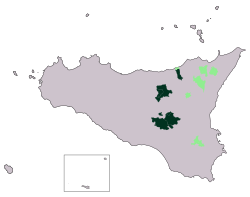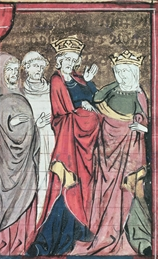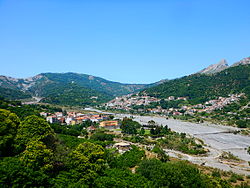| Gallo-Italic of Sicily | |
|---|---|
| Italian: Gallo-italico di Sicilia Siculo-Lombard | |
 | |
| Native to | Sicily |
| Region | Central and eastern Sicily |
Native speakers | 60,000 (2006) [1] |
Early forms | |
| Language codes | |
| ISO 639-3 | – |
| Glottolog | None |
 Gallo-Italic is classified as Definitely Endangered by the UNESCO Atlas of the World's Languages in Danger . | |

Gallo-Italic of Sicily, (Italian : Gallo-italico di Sicilia) also known as the Siculo-Lombard dialects, (Italian : Dialetti siculo-lombardi) is a group of Gallo-Italic languages found in about 15 isolated communities of central eastern Sicily. Forming a language island in the otherwise Sicilian language area, [3] [4] it dates back to migrations from northern Italy during the reign of Roger I, the Norman Grand Count of Sicily, [5] and his successors.
Contents
- History
- Sample text
- Text in English
- Piazzese
- Aidonese
- Nicosian
- Sperlinghese
- Sanfratellan
- Areas spoken
- Bibliography
- See also
- Notes
- External links
Towns inhabited by the new immigrants became known as the "Lombard communities" (Latin : oppida Lombardorum, Sicilian : cumuna lummardi). The settlers, known as the Lombards of Sicily, actually came principally from the Aleramici fiefdoms of southern Montferrat, comprising today south-eastern Piedmont and north-western Liguria, "Lombardy" being the name for the whole of northern Italy during the Middle Ages. In addition to a common place of origin, the colonizers brought their Gallo-Italic languages. These languages added to the Gallic influence of the developing Sicilian language (influences which included Norman and Old Occitan) to become the Gallo-Italic of Sicily language family.
Gallo-Italic of Sicily evolved from Old Lombard, and thus related to Lombard more closely than other Gallo-Italic languages.[ citation needed ]

